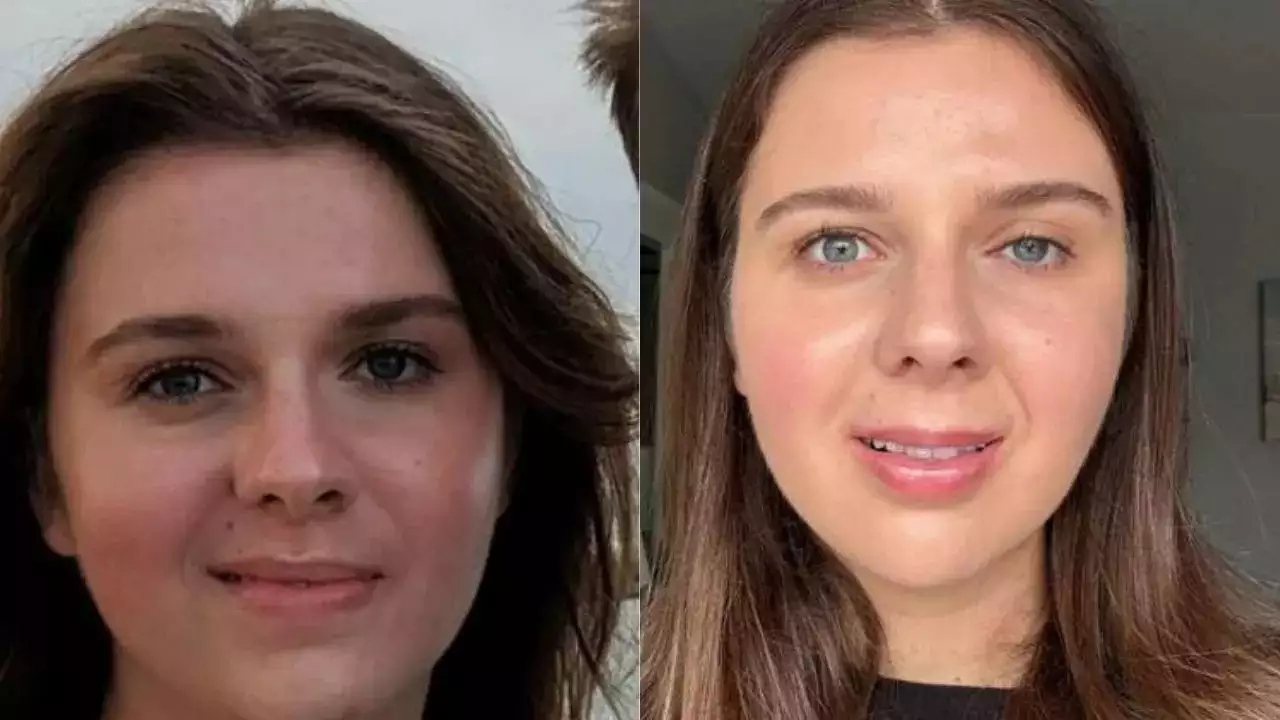Ashima Sharda Mahindra • 17 Dec 2024
Teenager Who Heard Strange Noise In Her Ear Was Diagnosed With a Slow-growing Tumour; Know How Doctors Extracted It

Lizzie Clark, before and after the surgery when her paralysis is gone and she is able to close her left eye (Pic: CBS News)
Lizzie Clark was just 13 years old when she began experiencing a strange ringing noise in her left ear. Initially, the teenager thought she had tinnitus, due to frequent colds and flu. However, she recovered from the cold, but the sound never stopped. Slowly, it began pulsing in time with her heartbeat.
Clark says for many months; the strange noise became a part of her life. She went to see physicians for her ear, nose, and throat - but only got the diagnosis after getting a CT scan done. Doctors found a growth behind her eardrum, which they said was a benign tumour.
"I was terrified. I was 13. I was like, 'What growth? What does that mean?'" Clark said in an interview with CBS News. "There were a lot of questions buzzing around."
Surgery could damage hearing, paralyze half face
Clark was then told she had facial nerve schwannoma - a rare, benign tumour that develops along the facial nerve and usually grows very slowly. While at first, she was suggested to get immediate surgery done to remove the tumour, doctors also said it would permanently damage her hearing and paralyze the left side of her face.
However, after a visit to another reputed doctor who believed that careful surveillance might preserve Clark's hearing and facial function, the family decided to go with it. According to experts, since facial nerve tumours are slow-growing, it is possible to wait before operating and since there were no signs of growth, it was the best possible way out.
The doctors then worked with reconstructive surgeons for a series of complex operations that could treat Clark while minimizing risk.
Nerve graft surgeries
For the nerve graft surgeries, doctors said they planned to connect the nerves on the left side of Clark's face to those on the right side. The procedure would rewire that side and keep Clark's face functional, and a follow-up surgery thereafter can also remove the tumour
While it was a unique approach, Clark was the first patient to have undergone the technique.
Surgery and improvement in the condition
Clark had the first nerve graft surgery in 2021, followed by another one the next year. Both procedures led to significant improvement in Clark's facial asymmetry and paralysis, which had become so severe that she could not even close her left eye properly. In 2023, scans showed that the tumour had grown and was threatening to reach her brain stem, so, doctors felt there was no point delaying the surgery any longer.
“I wasn’t scared at all. I was ready for the tumour to come out. I had accepted the fact I was going to lose my hearing. I was talking to my parents about potentially doing an ASL class,” she said.
Tumour removed after a 22-hour surgery
The doctors conducted a 22-hour surgery which went smoothly, and she was operated on near her ear and hearing structures to reach the tumour. Finally, the affected area was reconstructed.
She can now hear from both her ears.
Get Latest News Live on Times Now along with Breaking News and Top Headlines from Health and around the world.